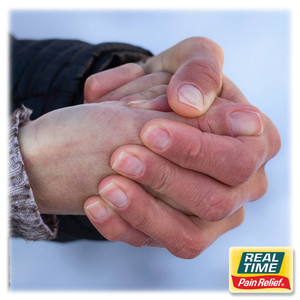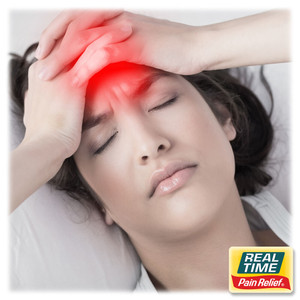Cervical Radiculopathy
Posted by Dennis R Escalera on 31st May 2025
Finding Relief from Pinched Nerve Pain with Nature's Ingredients
What Is Cervical Radiculopathy?
Cervical radiculopathy is a condition caused by compression or irritation of one or more spinal nerve roots in the cervical spine (neck). When nerves that exit the spinal column become pinched or inflamed, it can lead to pain, numbness, tingling, or weakness that radiates from the neck into the shoulder, arm, and hand. This is often referred to as a "pinched nerve."
Although it may resolve on its own in mild cases, many individuals experience chronic or recurring symptoms that interfere with work, sleep, and daily life.
Causes and Risk Factors
Cervical radiculopathy can be caused by several underlying conditions, including:
- Degenerative Disc Disease: As we age, the discs between vertebrae lose hydration and elasticity, making them prone to bulging or herniation.
- Herniated Disc: A ruptured disc can press on nearby nerves.
- Bone Spurs (Osteophytes): Overgrowth of bone due to arthritis can narrow the space where nerves exit.
- Spinal Stenosis: Narrowing of the spinal canal, often due to age-related changes, may compress nerve roots.
- Injury or Trauma: Sudden impact or repetitive strain can lead to nerve compression.
- Repetitive Neck Movements: Jobs or hobbies that involve sustained or awkward neck postures may increase risk.
Symptoms to Watch For
Cervical radiculopathy often produces symptoms along the nerve pathway affected. Common signs include:
- Sharp or burning neck pain
- Radiating pain into the shoulder, arm, or hand
- Numbness or tingling (paresthesia)
- Muscle weakness in the arm or hand
- Loss of coordination or dexterity
The specific pattern of symptoms depends on which nerve root is affected (e.g., C5, C6, C7, or C8).
How It’s Diagnosed
Doctors typically begin with a physical exam and review of symptoms. Diagnostic tools may include:
- MRI (Magnetic Resonance Imaging): To identify nerve compression and disc damage
- X-rays: To detect bone spurs or alignment issues
- EMG/Nerve Conduction Studies: To assess nerve function and pinpoint the affected level
Conventional Treatment Options
Treatment depends on the severity and duration of symptoms. Non-surgical approaches are often successful, especially in the early stages.
Common Treatments:
- NSAIDs (Non-Steroidal Anti-Inflammatory Drugs)
- Physical therapy for posture correction and muscle strengthening
- Oral corticosteroids or epidural steroid injections
- Cervical traction or bracing
- Surgery (e.g., discectomy or spinal fusion) in severe or unresponsive cases
While these treatments may reduce inflammation or relieve pressure, many patients seek topical pain relief options to minimize reliance on medications and avoid side effects.
Why Consider Topical Pain Relief with Nature’s Ingredients?
Topical analgesics with nature’s ingredients provide localized relief without systemic effects like gastrointestinal upset or drowsiness. When applied to the neck and upper back, these products can help soothe muscle tension, reduce inflammation, and ease nerve-related discomfort.
Benefits of Topical Applications:
- Fast-acting relief at the source of pain
- No interaction with oral medications
- Non-habit forming
- Safe for long-term use when formulated naturally
Top Nature-Based Ingredients for Cervical Radiculopathy Relief
Many ingredients found in high-quality topical creams are derived from plants and have been used in traditional medicine for centuries.
- Menthol: Derived from mint oils, menthol provides a cooling sensation and acts as a counterirritant to reduce pain perception. It also increases blood flow to the area.
- Capsaicin: From chili peppers, capsaicin helps desensitize nerve endings by reducing levels of Substance P, a chemical involved in transmitting pain signals.
- Arnica Montana: This flowering herb is known for reducing bruising, inflammation, and muscle soreness.
- Willow Bark Extract: A natural source of salicin, similar to aspirin, it may reduce inflammation and pain.
- Turmeric (Curcumin): A powerful anti-inflammatory That may help to modulate multiple pain pathways in the body.
- Comfrey Root: May help with soft tissue repair and reduces pain in joints and muscles.
- Boswellia Serrata: Blocks enzymes that trigger inflammation, especially useful for joint-related pain.
- St. John’s Wort Oil: Traditionally used to calm nerve pain and inflammation in natural remedies.
Best Practices for Using Topical Relief Products
To achieve maximum benefit, consider the following application tips:
- Apply 2–3 times per day consistently, especially during flare-ups.
- Massage gently into the back of the neck, upper shoulders, and upper back, where nerve roots exit the spine.
- Avoid applying to broken skin or open wounds.
- Wash hands thoroughly after applying products with capsaicin or menthol.
Supportive Strategies for Cervical Radiculopathy
Combining topical pain relief with healthy habits and supportive care can lead to better long-term results. Some helpful strategies include:
- Ergonomic adjustments: Ensure proper monitor height, chair support, and workstation setup.
- Posture training: Avoid forward head posture, especially when using phones or laptops.
- Gentle stretching and strengthening: Focus on neck stabilizers and scapular muscles.
- Heat and cold therapy: Alternate as needed to relax muscles and reduce swelling.
- Stress reduction: Practice deep breathing, meditation, or other calming techniques.
When to See a Doctor
Seek medical attention if you experience:
- Progressive weakness in your arm or hand
- Severe or worsening pain despite self-care
- Loss of bladder or bowel control
- Symptoms lasting more than 6–8 weeks without improvement
Prompt intervention can prevent further nerve damage and improve outcomes.
Final Thoughts
Cervical radiculopathy can be a painful and frustrating condition, especially when it interferes with work or daily tasks. While traditional treatments play an important role, topical pain relief products made with nature’s ingredients offer a safe, non-invasive solution for managing symptoms. When combined with posture care, movement, and lifestyle adjustments, these remedies can help reduce dependency on pharmaceuticals and support long-term healing.
In the final article, we’ll explore Facet Joint Syndrome, another spinal condition where natural topicals can make a big difference in daily comfort.
References for Cervical Radiculopathy Article:
- American Academy of Orthopaedic Surgeons (AAOS) – Cervical Radiculopathy:
https://orthoinfo.aaos.org/en/diseases--conditions/cervical-radiculopathy-pinched-nerve/ - Physiopedia – Cervical Radiculopathy:
https://www.physio-pedia.com/Cervical_Radiculopathy





